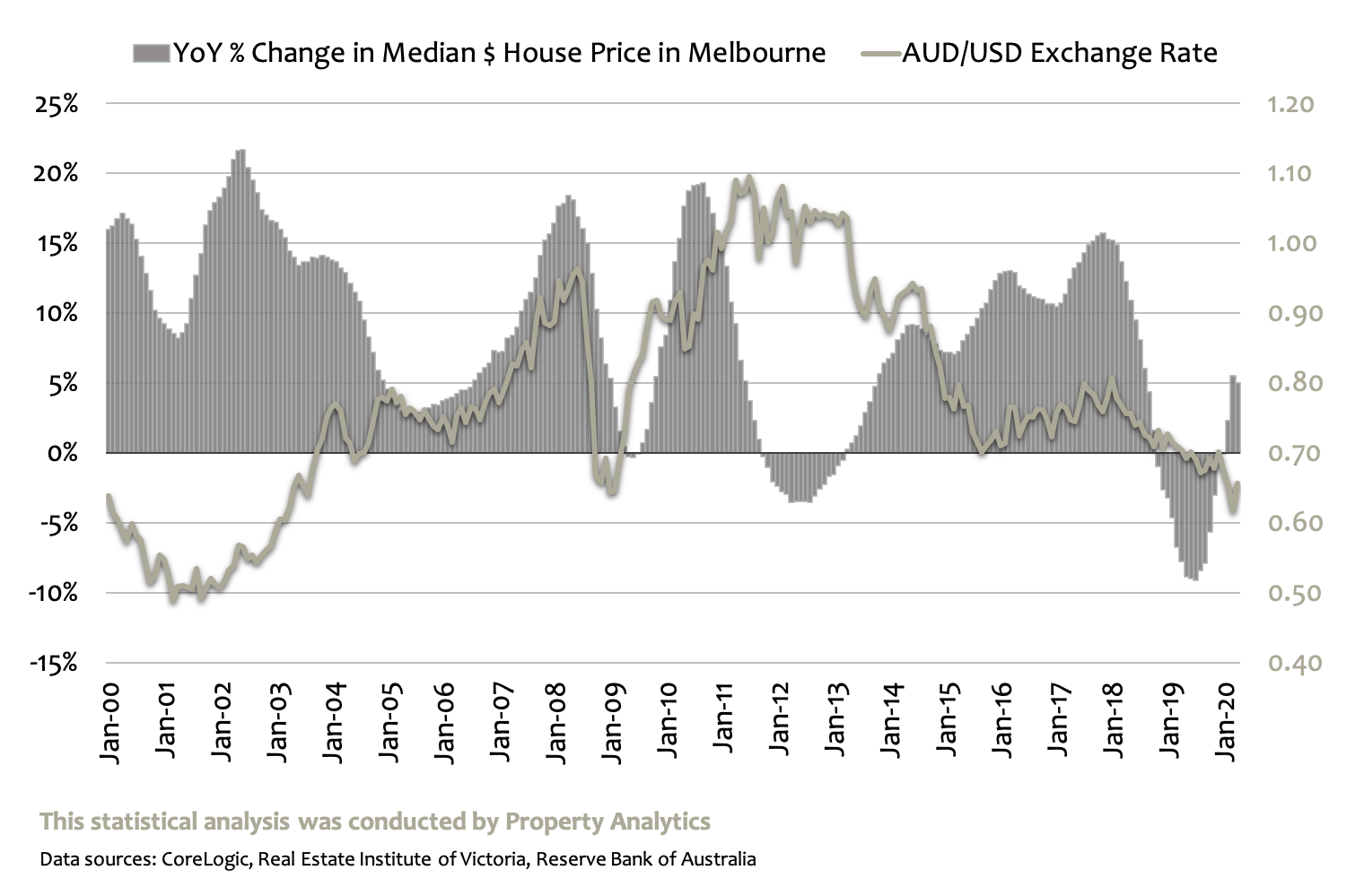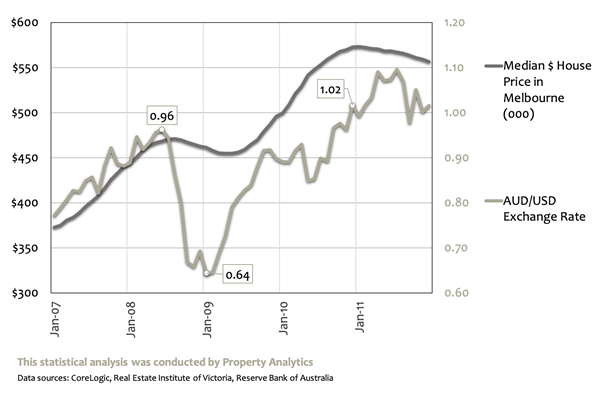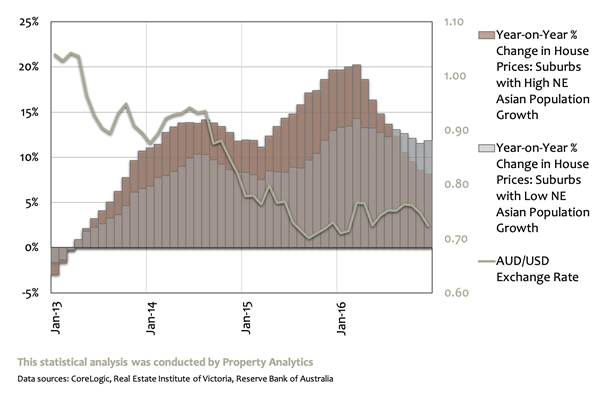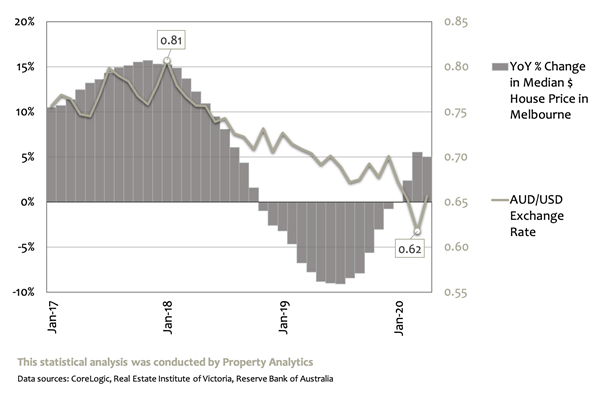Foreign demand has influenced Melbourne house prices to an extent over the years. Our housing market is reasonably open to overseas buyers, and the value of the Australian Dollar affects how international investors view Melbourne real estate.
The below graph illustrates the inverse relationship between Melbourne House Prices and the Australian Dollar over the last 20 years. When the AUD is low, foreign purchasers get more for their dollar, and Melbourne House Prices tend to rise.

This relationship was most pronounced in the early 2000s, where for nearly 5 years, the AUD remained well below its long-term average of $0.77 and House Prices grew by double-digits. Then, as commodity prices rose, so did the AUD. House Prices rose with them approaching the GFC.

The AUD reached $0.96 going into the GFC, then dropped by a third within months. House Prices bottomed out, then rose sharply before plateauing when the AUD hit parity with the USD.
This extreme decrease in the AUD goes a long way to explaining why Melbourne house prices held in value through the GFC, and then rebounded in the years immediately following. The story was very different in other parts of the world around that time.
Through much of 2011-2013 the AUD was valued above the US Dollar, and Melbourne House Prices were stagnant. There was less overseas demand through those years.
From 2013 the AUD began falling, and House Prices began to rise. The below graph illustrates this clearly.

Melbourne is an attractive destination for international students, migrants and investors. Individual buyers can often be characterised as all three at once – an overseas student attains permanent residency and purchases a property with the support of family members abroad.
Those in the market from 2013-2016 know how intense auctions were in Melbourne then, particularly in suburbs where demand was strong from buyers of Asian descent. As a result, price growth was significantly higher in these areas. This graph illustrates this.

The AUD hit a 17-year low recently after having fallen for two years. House prices fell significantly over the same period. It is rare to see the AUD and house prices moving in the same direction.

Overseas demand for Melbourne houses has been relatively subdued in recent years for a few reasons. In 2015, the Victorian State Government increased stamp duty for foreign purchasers, and introduced a land tax surcharge targeting ‘absentee owners’ and a vacant residential land tax.
Around the same time, the Chinese Communist Party ramped up anti-corruption efforts, and the flow of money from China to Australia slowed.
The relationship between the Chinese and Australian governments has been rocky in recent times, and Melbourne may well see less demand from that part of the world in coming months and years as a result.
But, Australia will emerge from this COVID crisis far stronger than most countries, and Melbourne’s status as one of the most highly rated places to live in the world will remain.
If the AUD remains well below its long-term average, foreign investors will see good value in Melbourne property.
Andrew Stone is the director of Property Analytics and Buyer Advocacy, a specialist real estate analytics business that provides strategic property research to Melbourne real estate agencies.
